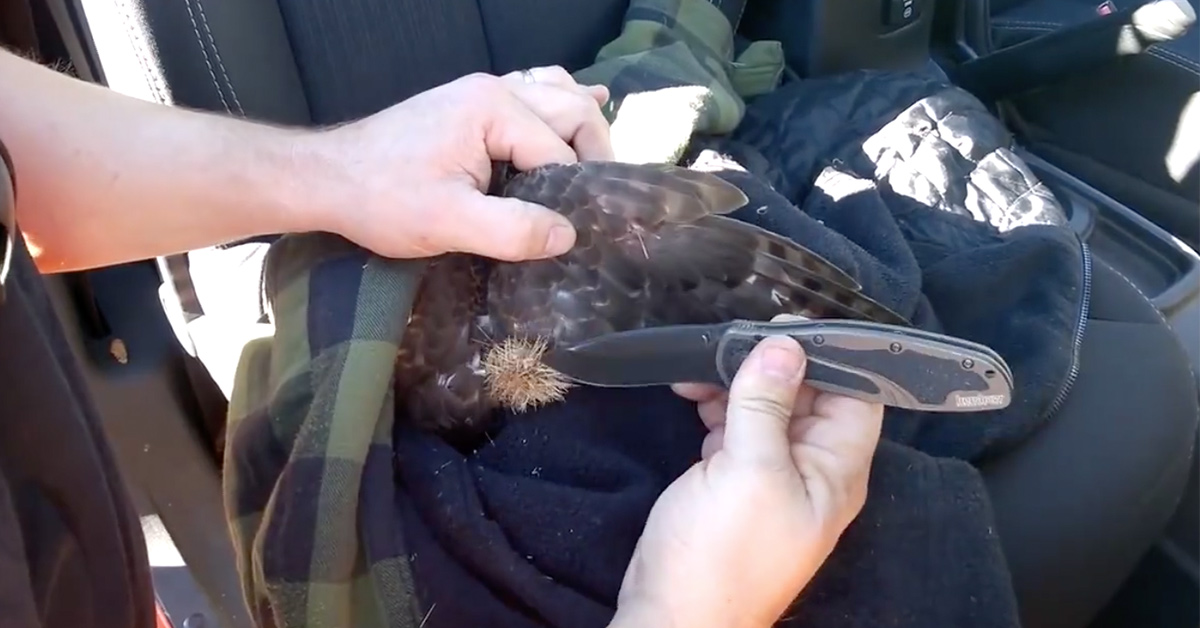
It’s been a while since my last installment of Knives Save Lives, a series exploring the many ways knives have been used to save people’s lives over the years.
While nearly all of those stories involved human lives, sometimes knives can be used to save animal lives (such as the Spyderco Whale Knife).
In a recent video posted on Facebook, a man shows how a Kershaw Blur can be used to rescue a hawk. Take a look:
This hawk was noticed being covered in chollas and was not flying very well. Thanks to a kind man, it was saved and freed… ? Credit: ViralHog
Posted by NTD Life on jueves, 22 de junio de 2017
The raptor apparently flew a little too close to a cholla, one of those fierce cactus plants found in places like Joshua Tree (if you’ve never been to the Cholla Tree Garden at the park, I highly recommend it). Not only is the cactus extremely painful but it can be difficult to get out. They have barbed spines that will attach themselves to almost anything that even lightly touches them.
When these guys found the raptor, it was exhausted and probably in searing pain. So the guy pulled out his Kershaw Blur and slowly used the knife to pull out the cholla cactus particles.
This is a touching story about the rehabilitation of a hawk and reason number 473 for why you should always carry a pocket knife.




July 11, 2017 at 8:20 am
Awesome display of human kindness, great!
July 12, 2017 at 8:28 am
Agreed.
July 12, 2017 at 9:48 am
delicate, and beautifully done. I couldn’t have done it better myself. I take my hat off to you sir , Louchugs
November 28, 2017 at 10:49 am
As a person who has lived and played in the Sonoran desert since 1968, I have had the opportunity to remove cactus spines from myself as well as other folks and animals several times. A better way to do it is with an ordinary pocket comb-preferably with coarse teeth. Slip the comb under the cactus ball next to the skin. With a quick jerk, pull outward forcefully, this will remove most of the spines (and also elicit a loud squawk from the victim!) Then the remaining spines can be pulled out with tweezers or needle-nose pliers.